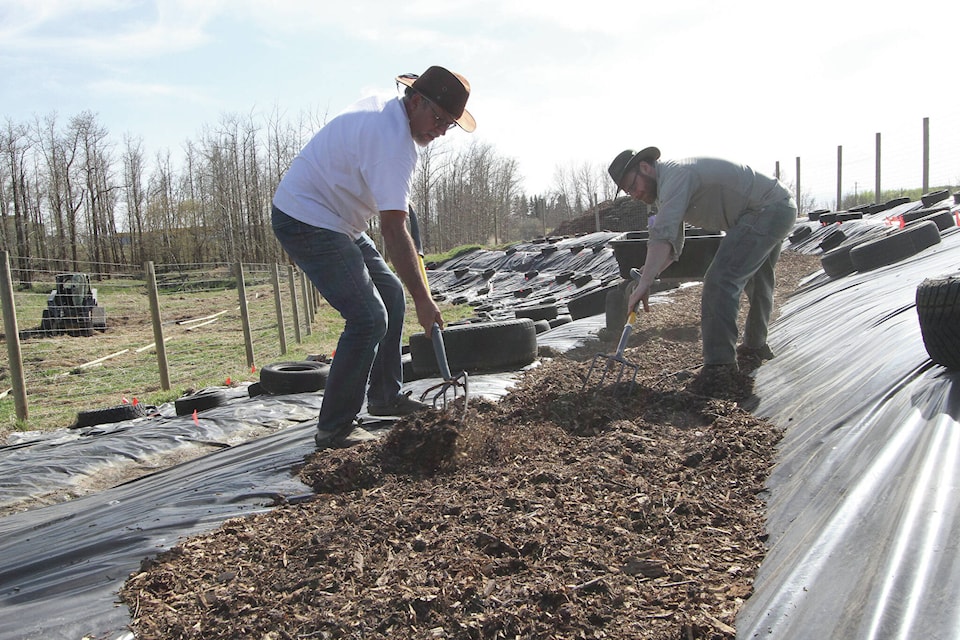Mulch is a layer of material applied to the surface of the soil. Mulch can be used to inhibit weeds, conserve moisture, keep the soil a constant temperature, improve soil or improve the aesthetics of a landscape. How thick or dense the layer is, affects its effectiveness.
When the layer of mulch is thick or dense enough to become a barrier between the earth and the sun. When the sun does not reach the earth, few weeds germinate and if they do they do not make it through the mulch to sunlight before they die. Perennial roots that have resources stored in their roots to enable the plant to push through inches of mulch into the sunlight. For this reason, it is important that the ground be prepared before mulch is applied. Landscape fabric might slow down the growth of perennial weeds but as air and water can penetrate the fabric, so can plants.
Everything dries faster in the sun. The ground isn’t an exception. When plants grow large enough for their foliage to touch the need to water lessens. The same happens when mulch covers the ground.
Look under any ground cover, it will be wetter and cooler. The same is true with mulch. It insulates against the temperatures, keeping the soil cooler.
There are many different types of mulches. They can be divided into two groups, ones that decomposes into the soil and ones that don’t.
Mulch that decomposes slowly becomes soil increasing the depth, texture and nutrition of the soil. How fast the mulch decomposes depends on the type of mulch and the size of individual pieces. The smaller the pieces the quicker it is broken down into soil by insects, micro-organisms and worms. Compost, well-rotted manure, and peat moss will become part of the soil within a season. Grass clippings and straw is slower to decompose but will need more added yearly. The speed at which woodchips decompose is dependent on the type of wood, size of chips, and the amount of moisture. They usually need to be replenished every 3 to 5 years.
Small rocks or gravel is also a viable mulch. It doesn’t break down into soil but when installed properly it is attractive and functional. The initial cost of materials is high but it rarely needs to renewed. Rock mulch is not maintenance-free. To keep it looking good it needs to be weeded as weed seeds will blow into the mulch and germinate. In the fall, remove all leaves that have fallen leaves.
Rocks will absorb and radiate heat increasing the air temperature while keeping the ground cooler. When installed properly, a rock mulch will be attractive and functional. Unlike wood-based mulch, rock is fire resistant.
Sheets of plastic, strips of rubber and jute-backed carpet have been used successfully in vegetable gardens. The aim here is to stop the weeds growing between the plant rows.
Jute-based carpet and sun-resistant plastic/rubber strips might not be aesthetically pleasing but they eliminate weeding between rows in the vegetable garden. The carpet allows water to penetrate while the solid sheets of plastic or rubber do not.
If prepared for, applied and maintained mulches will reduce garden maintenance. Mulches are not maintenance-free, they need to be weeded but fewer weeds will be present.
Linda Tomlinson is a horticulturist that has gardened in Central Alberta for over 30 years. She can be reached at your_garden@hotmail.com
